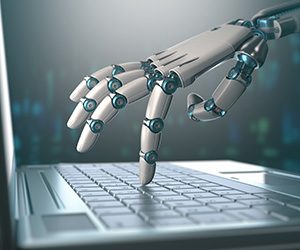 When was the last time you read the use agreement completely for an app, a website, or new software? I am guilty myself of rushing straight to the “I Accept” button without thoroughly reading the agreement. I justify it, perhaps erroneously, by the fact that I have read standard boilerplate agreements in the past and like to think that I am tech-savvy and understand the implications. As we move into an increasingly digital world, not everyone understands the tech behind the tech and the consequences of agreeing to use documents, particularly young kids who are now growing up digital.
When was the last time you read the use agreement completely for an app, a website, or new software? I am guilty myself of rushing straight to the “I Accept” button without thoroughly reading the agreement. I justify it, perhaps erroneously, by the fact that I have read standard boilerplate agreements in the past and like to think that I am tech-savvy and understand the implications. As we move into an increasingly digital world, not everyone understands the tech behind the tech and the consequences of agreeing to use documents, particularly young kids who are now growing up digital.
Growing Up Digital
The Children’s Commissioner For England recently published a report calling for increased internet protection for children. They called for greater oversight and user rights of websites targeting children and teenagers. When 13-year-olds were asked to read through the use agreement for Instagram, where many of them had an account, they found the legal language boring and incomprehensible. When the use agreement was rewritten to be understandable, the children were surprised at the rights that they had given up and their lack of recourse in case of problems. The report calls for more oversight of websites and apps targeting children and a crackdown on cyber bullying by children and adults.
In the beginning, the internet was designed for exchanging information between the military and advanced research academic institutions. I am not sure that anyone could have foretold a time when it was being used commercially for exchanging pictures and texts by people of all ages. It has morphed and grown over time and I think we have a responsibility to protect the youngest users.
Digital Responsibility
As educators and parents, it is important that we teach digital responsibility to young people to give them a basis on how to conduct themselves on the internet and in social media. I work with a youth group and we regularly talk about rights and responsibilities while on the internet. We focus on recognizing cyber bullying, sharing private information, and behaving appropriately on social media. We can all think of adults who should have had these lessons growing up.
I recently came across an article that shares ideas on how to teach digital responsibility. They give some great pointers on topics such as using social media wisely, developing a professional persona, and protecting your privacy. We may think that some of these are topics for adults, but children are building their digital footprint already. When my son was still a teenager, he somehow developed a profile that listed him as a 50-year-old veteran and father; the resulting advertisements showed up in my mailbox for several years afterwards. He got an invitation from AARP even before I did.
Tools
Dijiwise is a tool created to allow parents to connect to their child’s social media accounts (assuming they will give you the password). You can monitor multiple accounts, such as Instagram and Facebook, through an app. This tool gives real time notifications so you can steer a teenager toward responsible posting and sharing. Circle by Disney is a device that connects to your home wi-fi and controls all devices in the home. You can set various limits, such as times a device is used, sites visited, or time spent on a particular device. This is useful for monitoring younger children.
Thoughts
Young people are growing up digital so it is important they start off on the right foot. Even with all of the monitoring and tools available, I think that the most important tool is open conversation. “What are you working on tonight?” “How are things going in your social circle?” The earlier we start that dialogue, the better chance we have of setting them up for success as digital citizens. Let me know your thoughts.
Kelly Brown is an IT professional and assistant professor of practice for the UO Applied Information Management Master’s Degree Program. He writes about IT and business topics that keep him up at night.





